DLW5BTM102TQ2

Noise suppression technologies/case study introduction (Consumer)
INDEX
A major smartphone manufacturer released a magnetic wireless charger using a new kind of wireless charging method for its own products. Several other companies then released similar products.
In this article, we surveyed noise issues with wireless chargers and similar products using this new wireless charging method. We also considered a measure for suppressing observed noise.
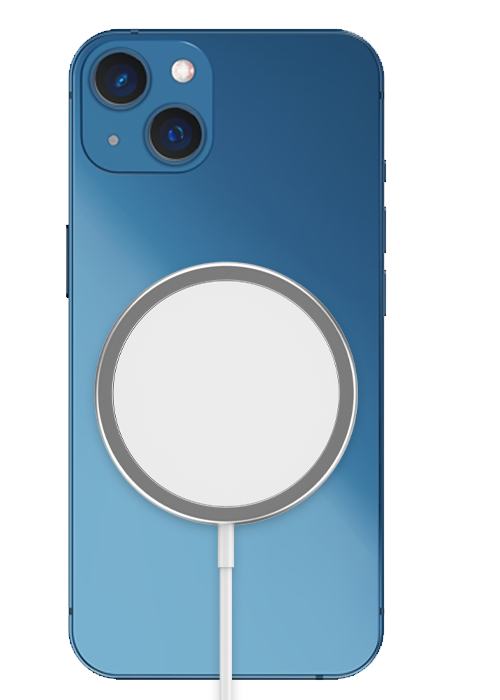
We prepared one genuine model and four compatible models to perform noise evaluation.
The evaluation environment was configured as follows.
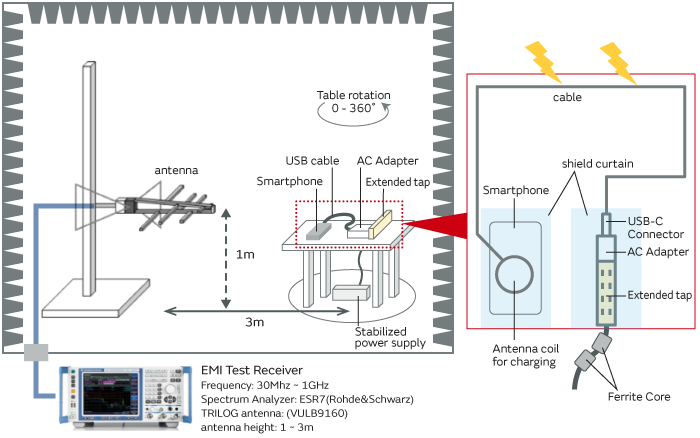
The radiated noise level was quite low for the genuine product, and there were no issues. Compatible manufacturer product 2 and compatible manufacturer product 4 did not satisfy CISPR32 standards. Confirming the noise status revealed that changing the AC adapter caused the noise waveform to change, suggesting that the AC adapter was the source of the noise.
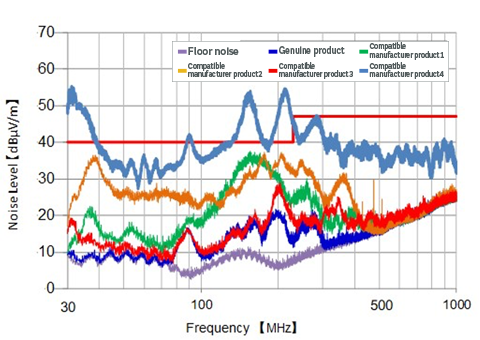
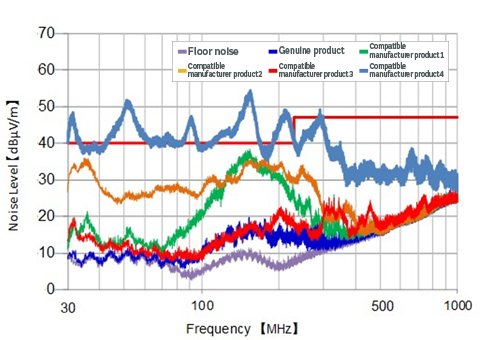
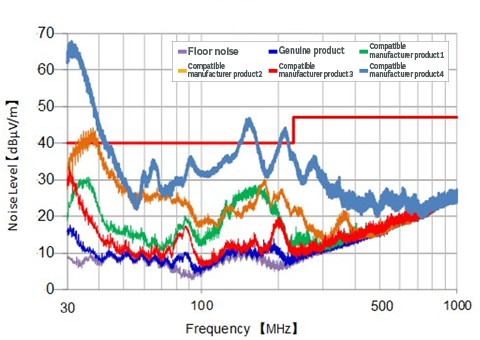
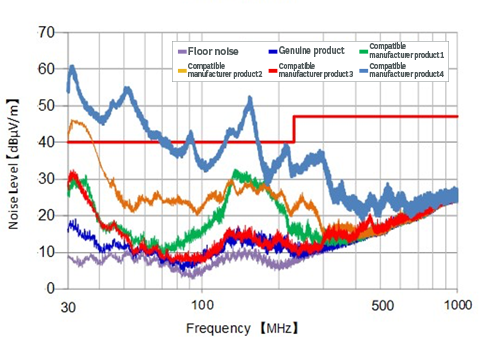
Because the AC adapter was suspected to be the source of the noise, we added a common mode choke coil (CMCC) where the cable and USB-C connector meet to confirm whether the noise radiation could be suppressed, in order to prevent noise from the AC adapter from entering the cable (the source of the noise).
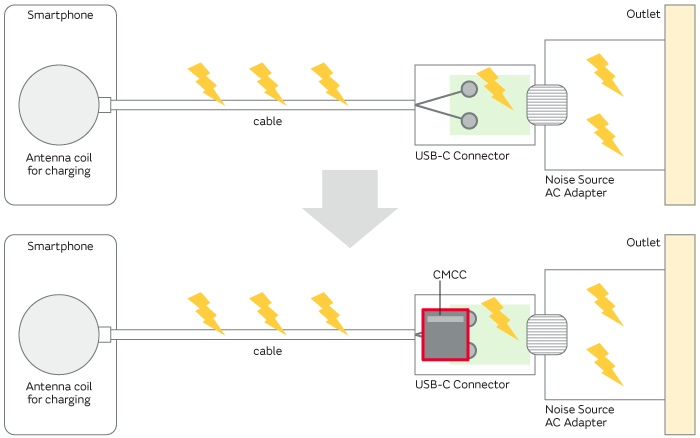
This part effectively removes common mode noise without any impact from magnetic saturation caused by power supply current, as it is compatible with a large current of 2.5 A.
Although the product was unable to satisfy CISPR32 standards, we confirmed that adding a CMCC has a 10 to 20 dB noise suppression effect across nearly the entire frequency from 30 MHz to 500 MHz. The decrease in the effect at 60 MHz is likely due to resonance on the L and around the C on the CMCC.
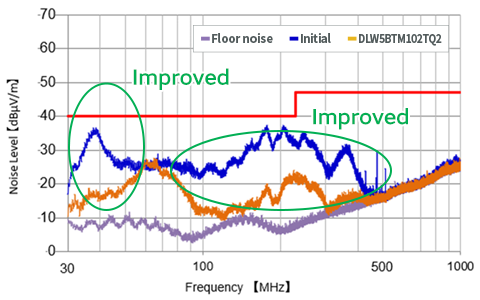
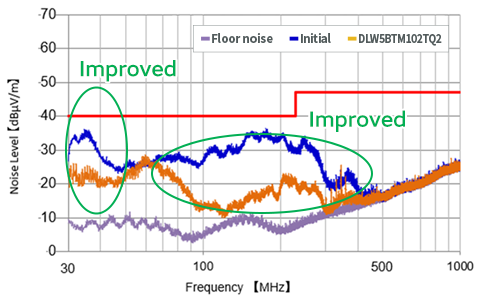
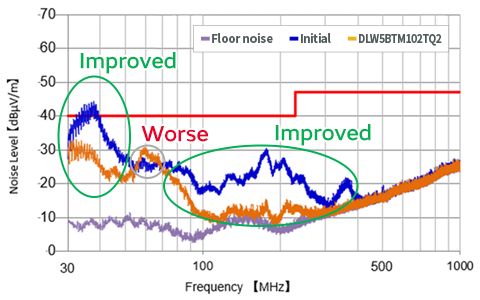
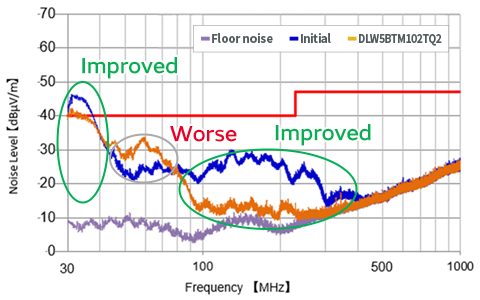
Although the product was unable to satisfy CISPR32 standards, we confirmed that adding a CMCC has a 10 to 15 dB noise suppression effect across nearly the entire frequency from 30 MHz to 1GHz. The decrease in the effect at 80 MHz is likely due to resonance on the L and around the C on the CMCC.
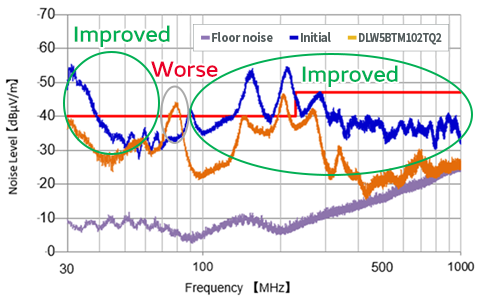
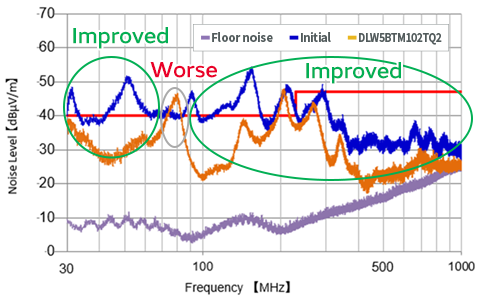

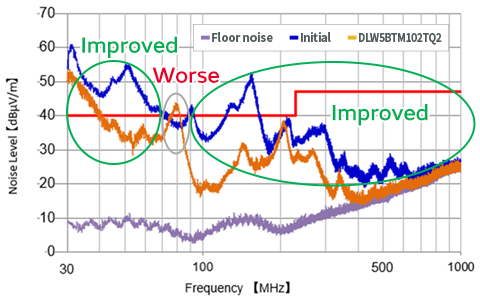
Smartphones have become crucial devices in our lives, and the chargers used for them are just as important.
Noise suppression measures are also important for this new magnetic wireless charging technology.
In this article, we found that the noise level was lowest in the genuine product, but that two of the compatible manufacturer products did not satisfy CISPR32 standards. We therefore investigated how to resolve this issue.
We were able to confirm that adding a CMCC where the cable and USB-C connector meet had a significant noise reduction effect.
Introducing a common mode choke coil is therefore an effective means of handling noise.
This part effectively removes common mode noise without any impact from magnetic saturation caused by power supply current, as it is compatible with a large current of 2.5 A.